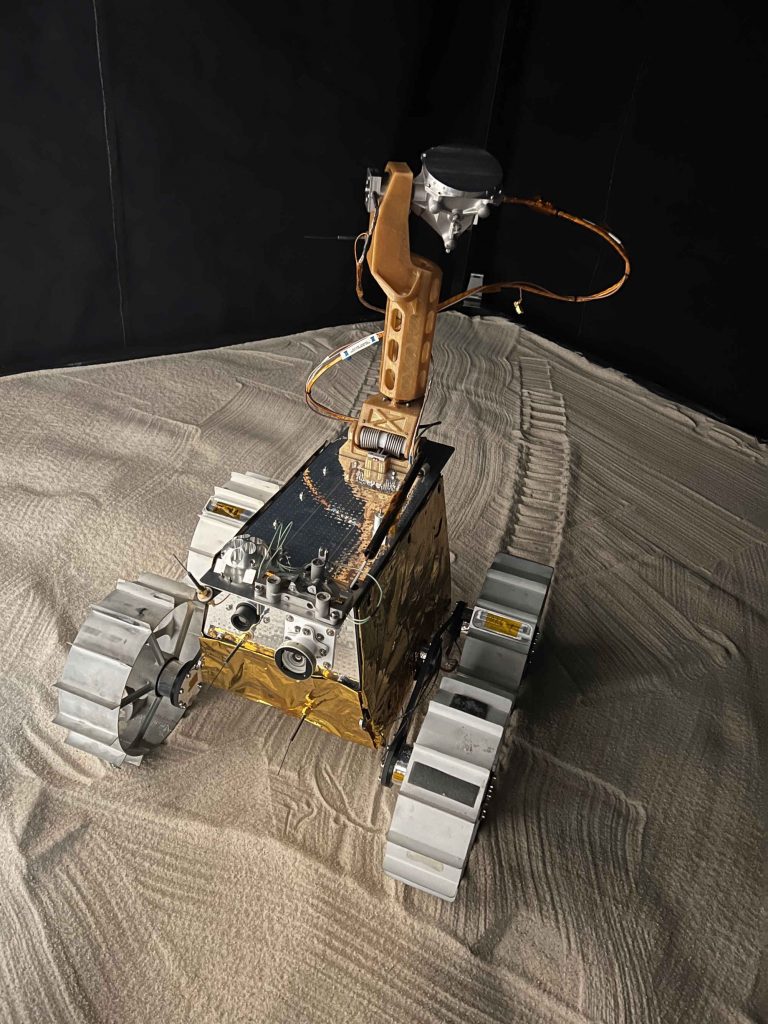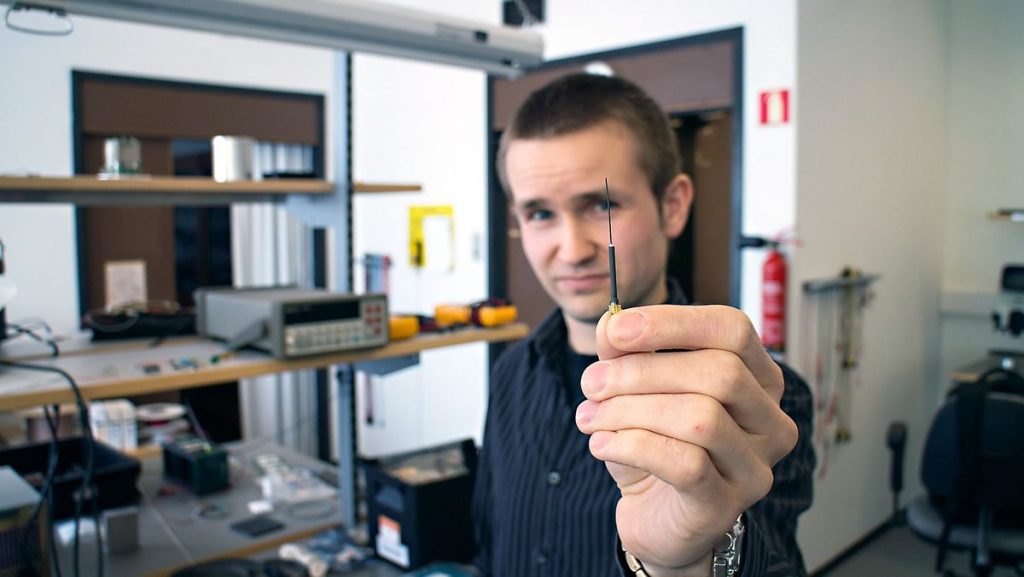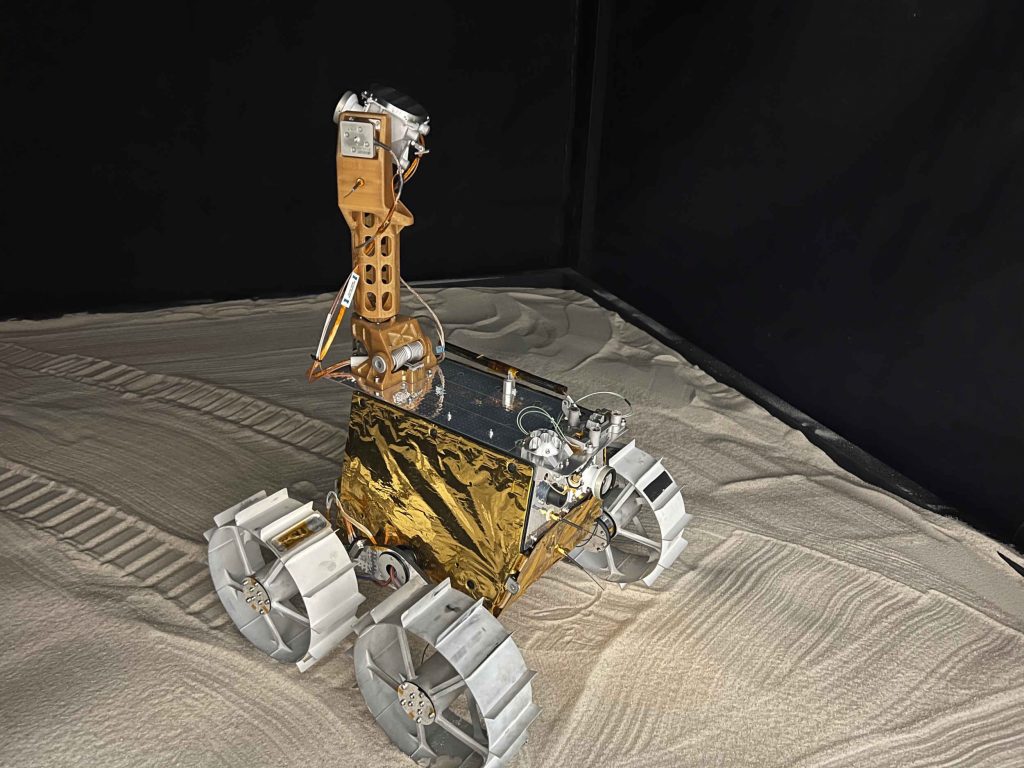EIDEL and the University of Oslo are going to the Moon
A space instrument from University of Oslo (UiO) and the electronics company, EIDEL, is a world leader in measuring electron density.
The United Arab Emirates (UAE) aims to become one of the first nations to the Moon. The 10kg Moon rover named “Rashid” is scheduled to explore the Moon’s surface before the end of 2022. On board Rashid is a Norwegian designed and built instrument that will measure electron density on the Moon.

“Mohammed Bin Rashid Space Center contacted us in the summer of 2019 in connection with an exciting space project they were working on called Emirates Lunar Mission” (ELM), says Dr. Tore André Bekkeng at the Norwegian electronics company, EIDEL.
“Mohammed Bin Rashid Space Centre wanted to find out if our multi-Needle Langmuir Probe, m-NLP, could be used to measure the electron density of the first meter above on the Moon’s surface”.
The Emirates Lunar Rover version of the instrument is called LNG.
Moon dust on the equipment
“When selecting the scientific package for the Rashid rover, we wanted to tackle not only fundamental scientific questions but also investigate the lunar environment in view of technologies relevant for future mission to the Moon. The lunar plasma environment, by its interaction with the lunar surface dust, will impact any systems deployed to the Moon. Thus, the Langmuir probe system LNG was found to be highly promising in view of its scientific return, while being a compact, lightweight, and rugged instrument. We are grateful for the smooth execution of the instrument development and manufacturing, and the interaction with the teams at EIDEL and UIO.”, says Dr. Hamad Almazooqi, ELM Project Manager.
Soon after, the Department of Physics of the University of Oslo (UiO) also got involved to help with the interpretation of the measurements. “The Moon’s physics is a bit on the edge of our area of expertise”, says Lasse Clausen from the section Department for Space and Plasma Physics, “but for us this is a unique opportunity to develop our research profile. The electron density is important because it says something about the ionization effect on Moon dust and how dust particles attach to the rover and equipment.”
“The process that creates electrically charged dust is little understood”, says Hannah Sargeant at the Open University in Milton Keynes in the UK to Nature (https://www.nature.com/articles/d41586-020-03054-1). The LNG instrument is the most exciting component onboard Rashid, she believes. The instrument was originally developed for use on UiO’s research rockets to measure electron density at the top of the earth’s atmosphere. Here, the electrons create both northern lights and interference for satellite signals such as GPS.

The instrument is also going to the space station
The instrument has become so successful that NASA has employed it on some of their research rockets. It is still operational on the Norwegian satellite Norsat-1, since it’s launch to orbit in 2018, and it will be launched next year as an In Orbit Demonstration taking measurements in Low Earth Orbit while it’s connected on the International Space Station (ISS)’s Bartolomeo service platform.

“m-NLP is the only instrument in the world that can measure plasma densities with a resolution of less than one meter”, Airbus wrote in a press release when the contract for delivery to the space station was announced.
The same technology is also on its way to Mercury aboard the BepiColombo, a Japanese-European collaboration that aims to investigate plasma waves as part of it’s scientific mission.
One of the first nations to the Moon
In addition to the United States and the Soviet Union/Russia, China has placed vehicles on the Moon. The UAE plan to be one of the first countries on the Moon with Rashid and has an ambitious space program. The spacecraft Hope, is already collecting valuable scientific data from its orbit around Mars, and last year the first astronaut from the UAE completed an 8-day stay on the International Space Station ISS.
Facts About Emirates Lunar Rover – Rashid
The lunar rover Rashid is being developed by the Mohammed Bin Rashid Space Center in Dubai. The rover is half a meter long and weighs 10 kg. On board it has several cameras, a thermal instrument, and the Norwegian instrument m-NLP (named LNG on the rover). The instrument m-NLP has been developed at the University of Oslo, and further developed and qualified for use in space by the electronics company, EIDEL AS. EIDEL delivers several specially adapted Langmuir probes which will be one of the key payloads on board. Data obtained from the research will be shared with the international scientific community.

Read the related news article in the Norwegian financial news site E24